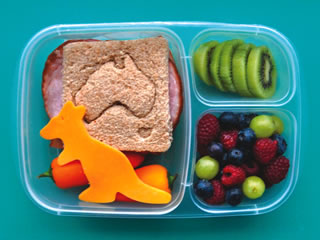Watch what you put in your child’s lunch box
A cursory look at the supermarket shelves will reveal to any discerning parent the dangers inherent in what we pack into our children’s lunch bags.
From pastries to baked foods and everything in-between, those that are not outright junk are empty calories.
Nutritionists say the poor nutritional choices may lead to behavioural problems among kids, and this may take the form of sugar crashes (a sense of fatigue after consuming a large quantity of carbohydrate), foggy cognition and hyperactivity.
Indeed, a recent study published inChildhood Obesity found that most snacks that parents put in their children’s lunch bags are more likely to be high in fat and sugar. Worse still, these foods don’t come cheap, as they are mostly imported from China and other Asian countries notorious for producing substandard goods for export to Third World countries.
Many parents consider social status — instead of nutritional benefits — when packing their children’s lunch boxes. As such, you hardly find things like apples, oranges, and other edible fruits that will nourish young brains and bodies.
Nutritionists note that more often than not, the average modern parent would rather stuff the lunch bags with salty or sugary snacks that are more likely to damage the health of growing children.
Top on the list is cheese ball, which comes under various names and labels. According to womenshealthmag.com, a pack of cheese ball contains 10 gramms of fat (1.5 g saturated) and 250 mg of sodium (salt). It therefore packs a whopping 150 calories. The snack is low in fibre, and is made with neurotoxic monosodium glutamate.
If you’ve ever eaten cheese ball, you would discover that when the orange coating fuses with fingertip oil, it forms putty-like dirt that affixes to seemingly any surface. As such, eating cheese ball is always accompanied with plenty of finger-licking. When you consider all the pathogens that a child’s hands touch daily, it will give you a fair idea of likely number of hospital visits for the year.
Some snacks come with sugars sprinkled on them. On the average, they contain 240 calories, 12g fat and 16g sugars. By interpretation, when you serve a pack, you would have given your child four teaspoons of sugar, enough to set up your child for a mid-morning energy crash.
Pop-tarts and frosted cherry are other unhealthy snacks that contain 400 calories, 10g fat and 32g sugars. The primary ingredients here are refined flour, various sweetener, and oil-fruit, all of which, combined, make a recipe for disastrous health consequences.
There are jelly-like snacks that come in attractive labels. One of them is Skittles and allied products. A package is loaded with 250 calories, 2.5g fat and 47 g sugars. Each tablet of these moulded jellies comes in attractive colours, meaning they’ve gone through unhealthy processes of artificial colouration.
One of the contentious colours in food additives is Yellow 5, which the Journal of Pediatrics has linked to hyperactivity in children. Apart from sugar, they also contain artificial stimulants. Experts say this combination not only makes it difficult for kids to focus on learning, but it could also lead to disruptive behaviours.
Other unhealthy contents in typical kid’s lunch pack are bottled beverages, including sodas and pseudo-milk drinks. A typical 50cl bottle contains 230 calories, 2g fat and 45g sugars. The problem here is that the average so-called milk drinks is not milk at all. Rather, they are usually a bizarre blend of water, high fructose corn syrup, and high-calorie whey.
For sodas, a 50cl bottle will supply your kid with an unwanted 200 calories, 0g fat and 54g sugars.
These drinks come in artificial colours, which the Centre for Science in the Public Interest estimates are responsible for roughly 15,000 cancers in the United States every year. In particular, the Centre vilifies caramel colouring — a favourite in soda colouring — which is considered a carcinogen. Apart from the calories, sodas also contain caffeine, which contributes to hyperactivity among children.
Paediatrician and child obesity specialist, Dr. Maureen Tade-Oluwa, says the effects of these unhealthy foods will be better appreciated when you consider that they lead to obesity among kids, a situation that may contribute to adult health problems later in life.
She says, “Childhood obesity can have harmful effects on the body in a variety of ways. Obese children are more likely to have adult diseases, including high blood pressure and high cholesterol, which are risk factors for cardiovascular disease. They also stand the increased risk of impaired glucose tolerance, insulin resistance and Type 2 diabetes.”
She notes that such children are likely to develop breathing problems, such as sleep apnea and asthma. “As their weight increases, relative to their height, they may develop joint problems and musculoskeletal discomfort,” she adds.
Other health problems obese children may have include fatty liver disease, and heartburn.
And by the time they become adolescents, Tade-Oluwa says, they have a greater risk of social and psychological problems, such as discrimination and poor self-esteem, which can continue into adulthood.
The problem does not end there, she says. “Obese children are more likely to become obese adults; and adult obesity is associated with a number of serious health conditions, including heart disease, diabetes, and some cancers. If children are overweight, obesity in adulthood is likely to be more severe.”
Why don’t you save your child a lifetime of health crisis by giving him healthy food all the time?
PUNCH.








